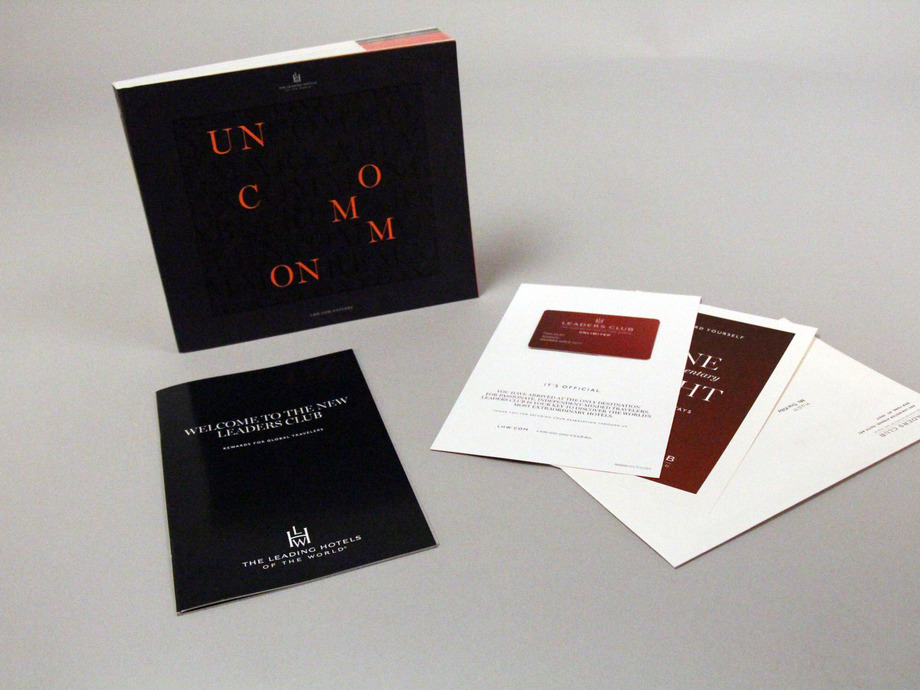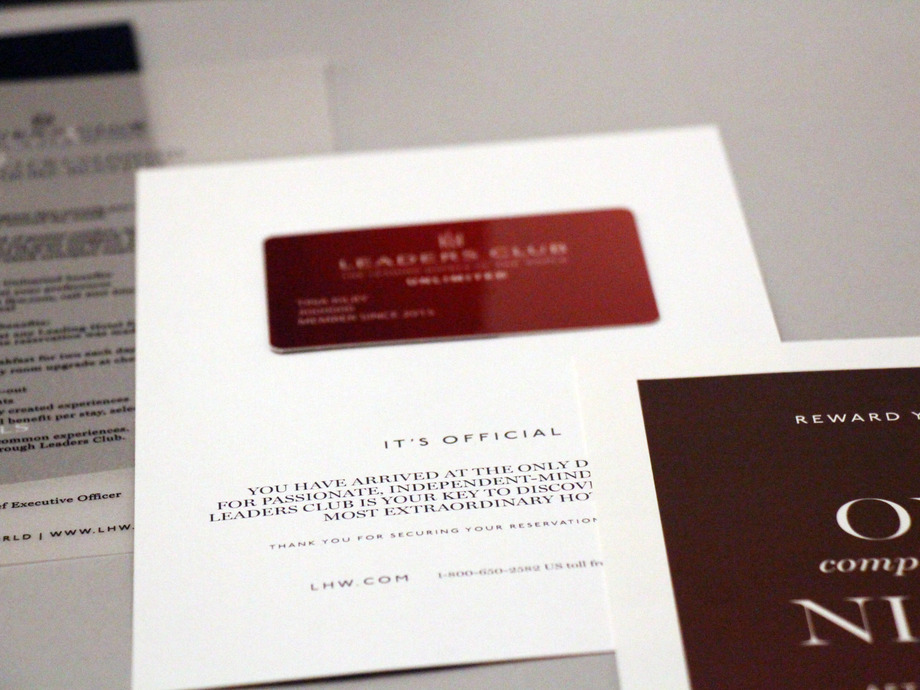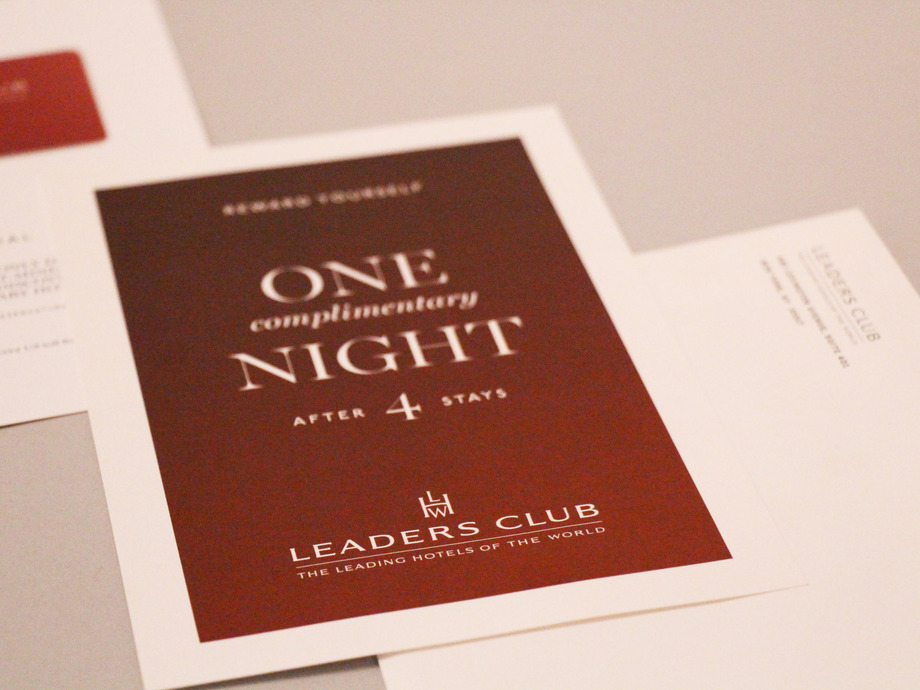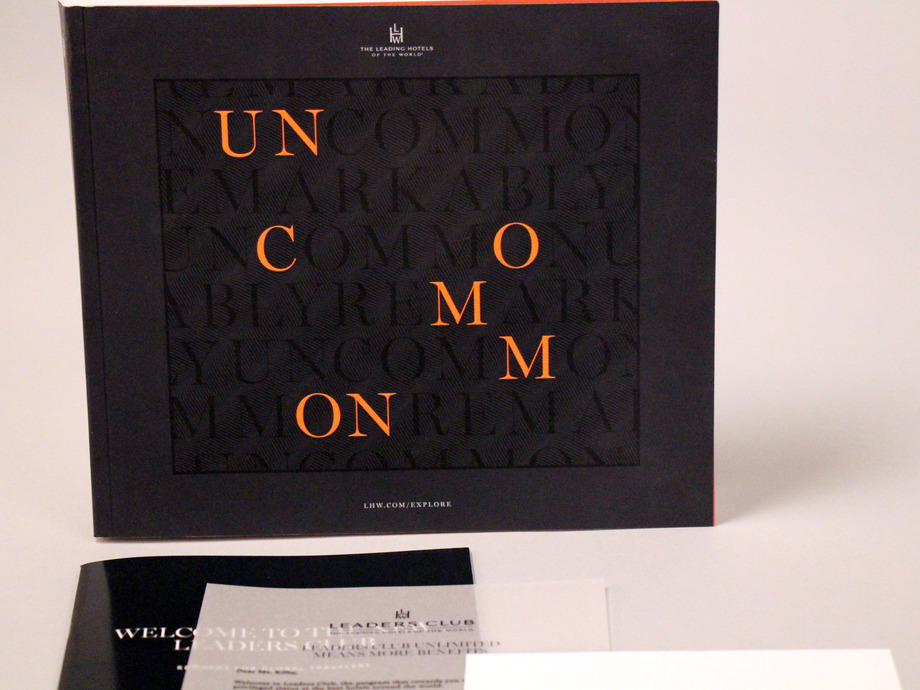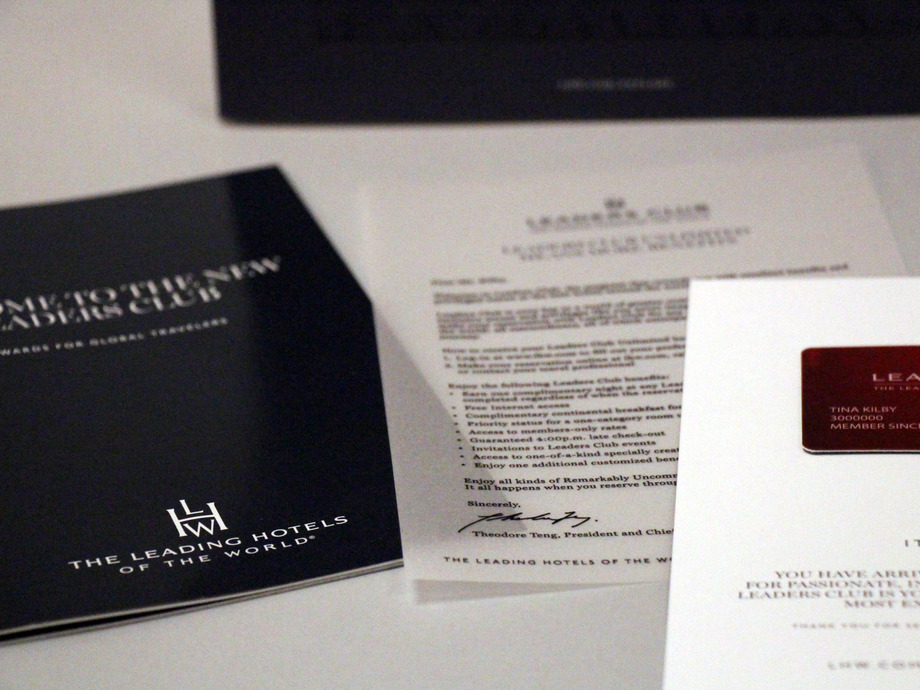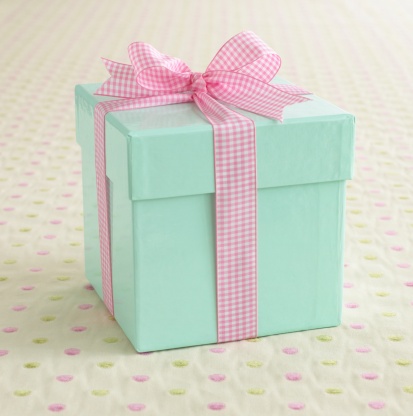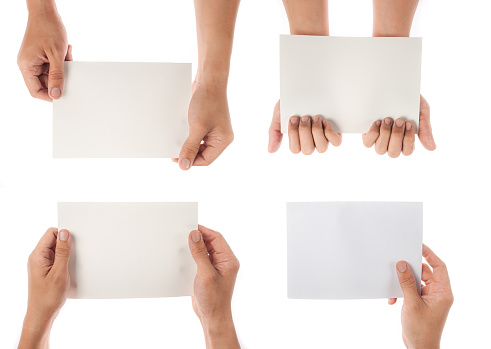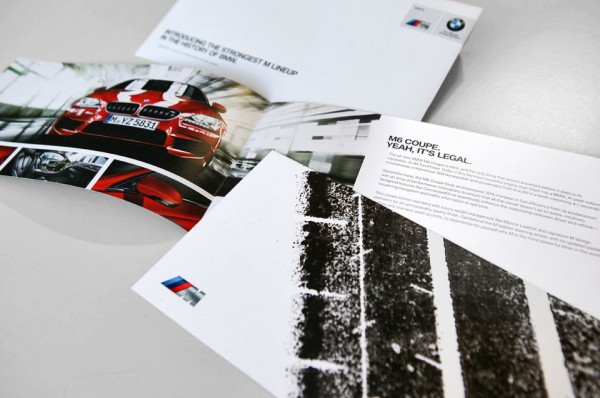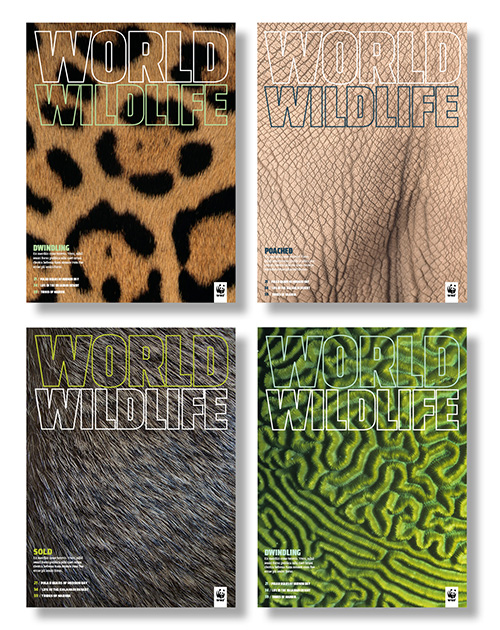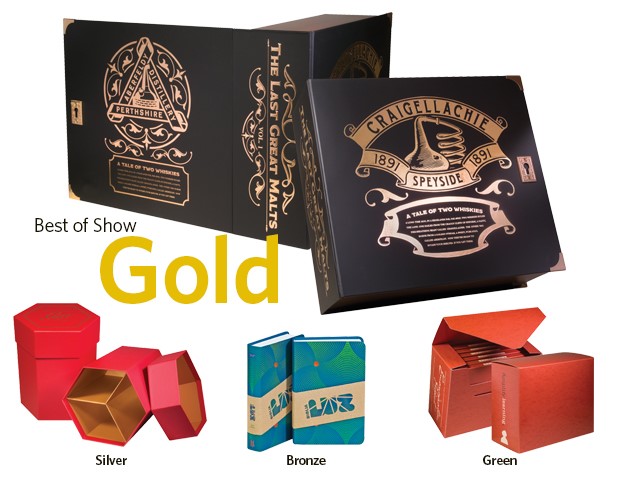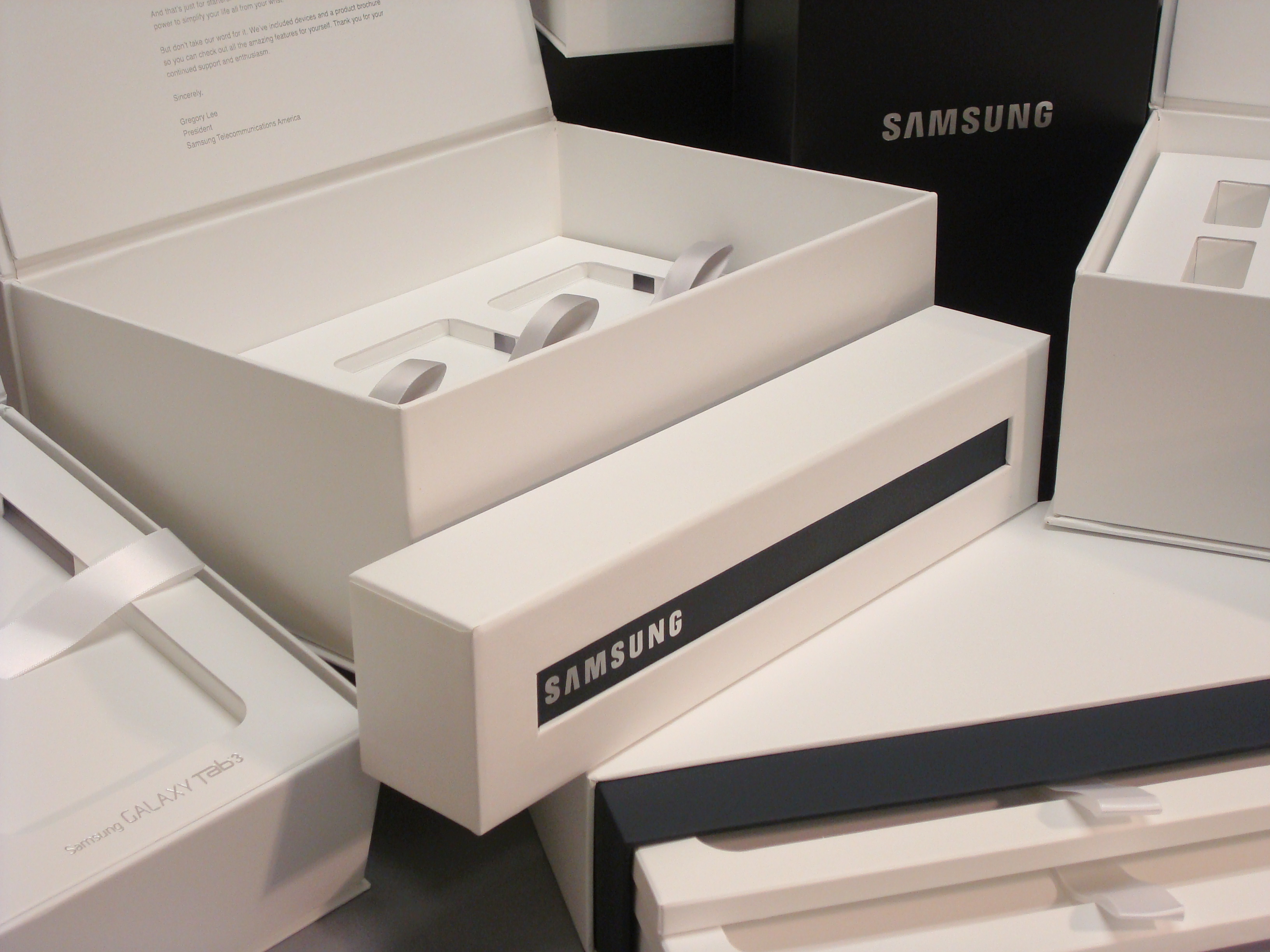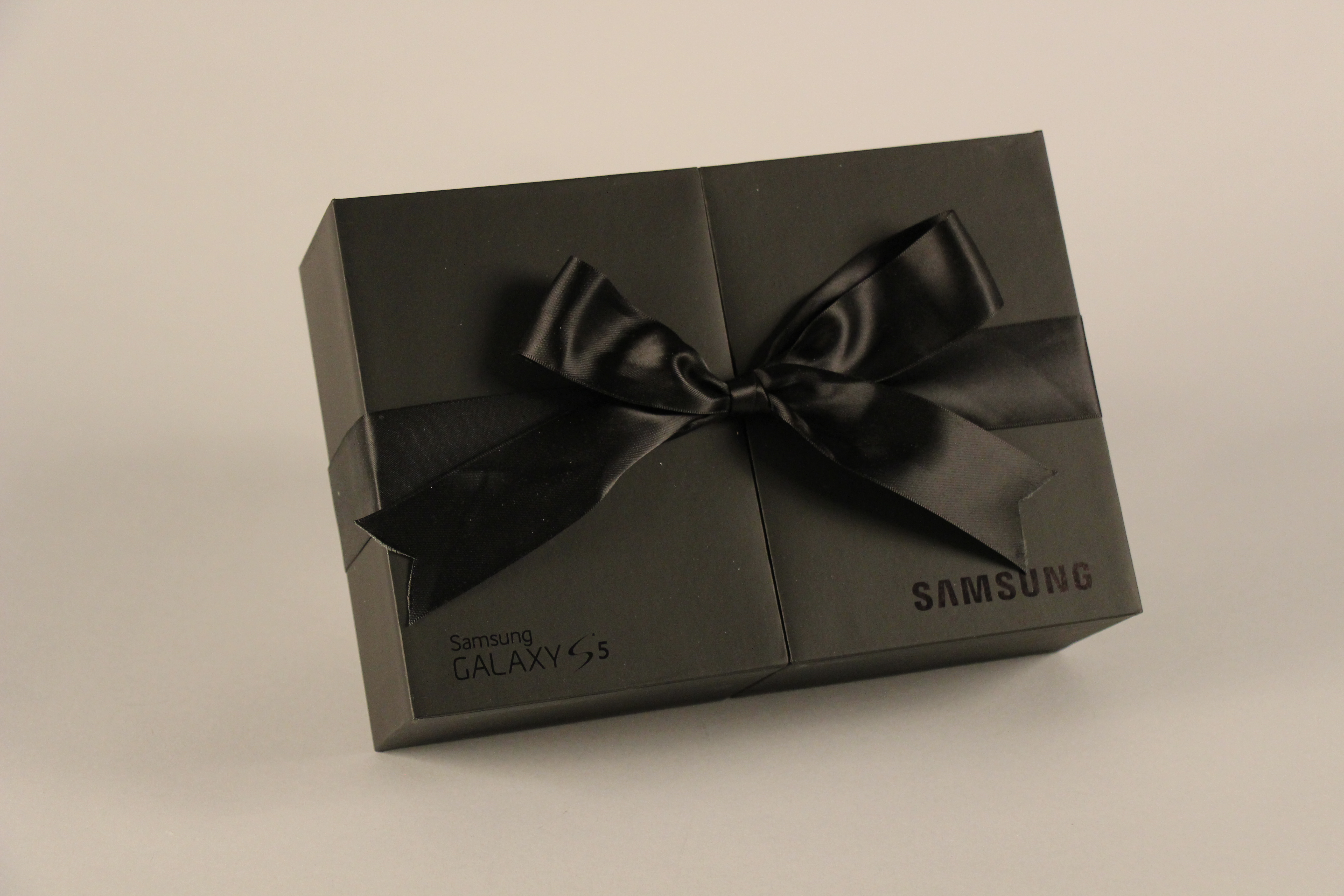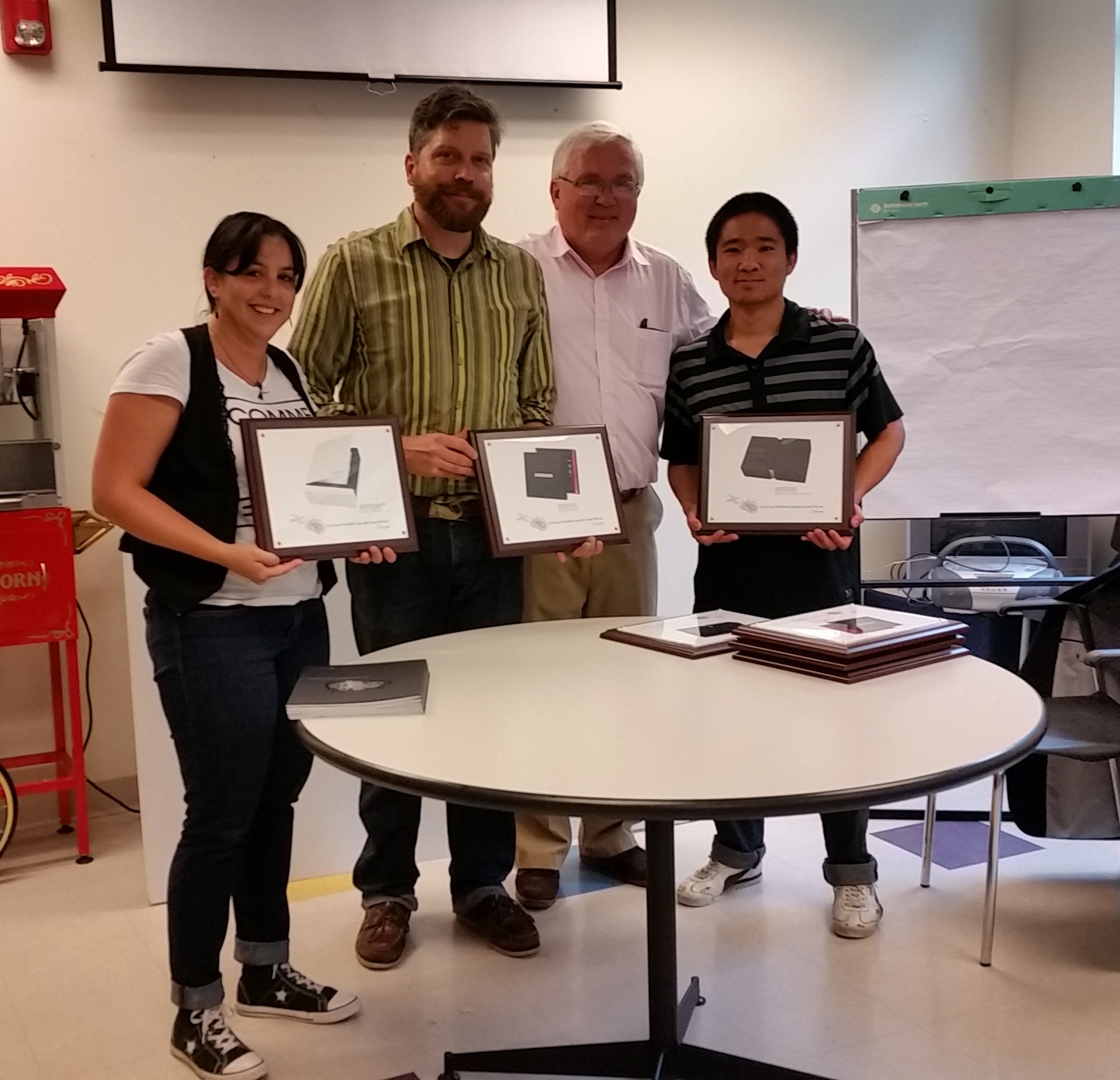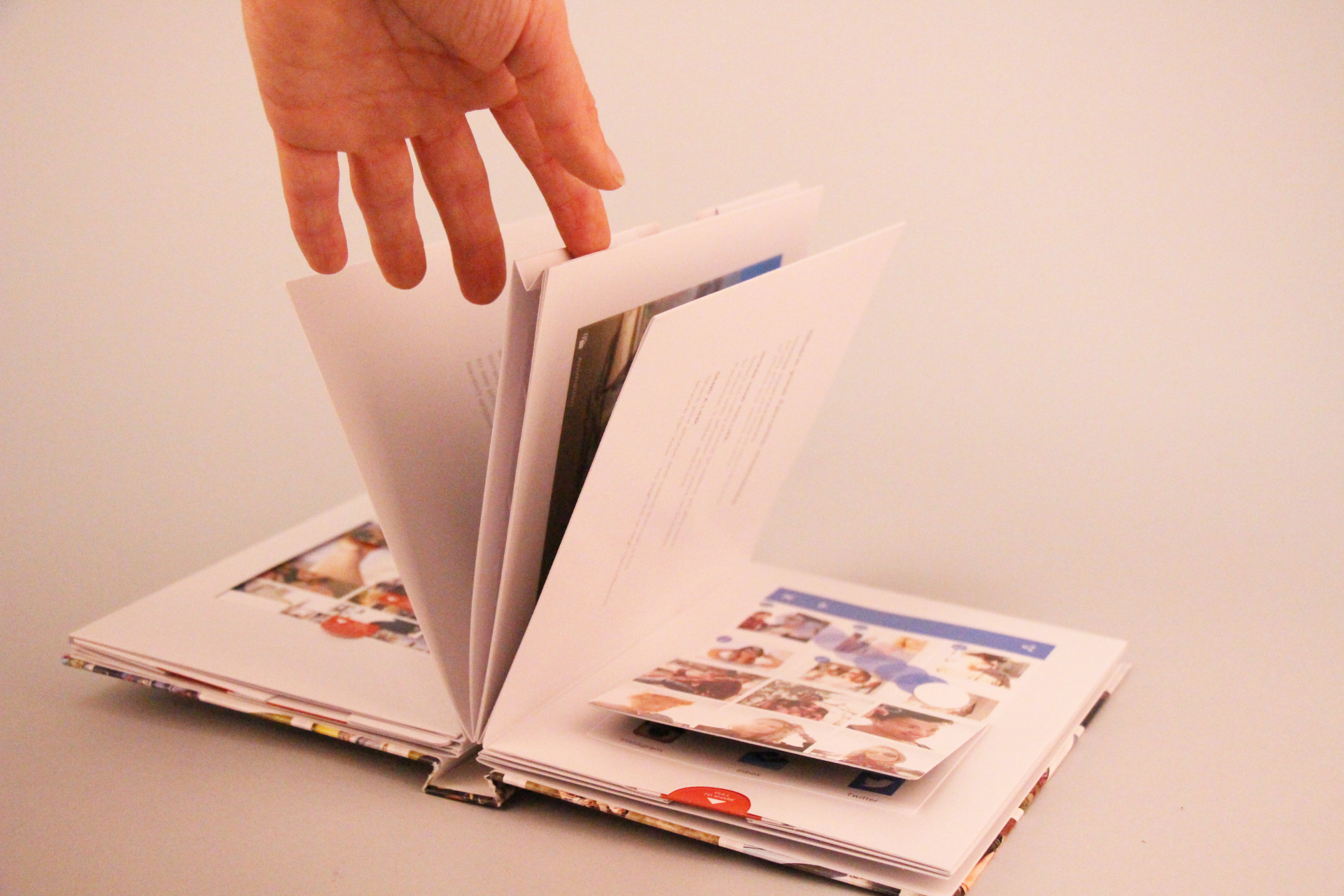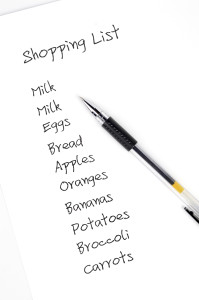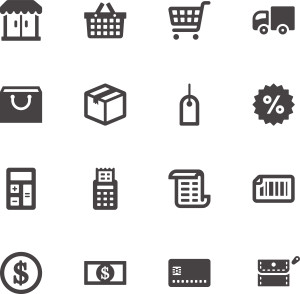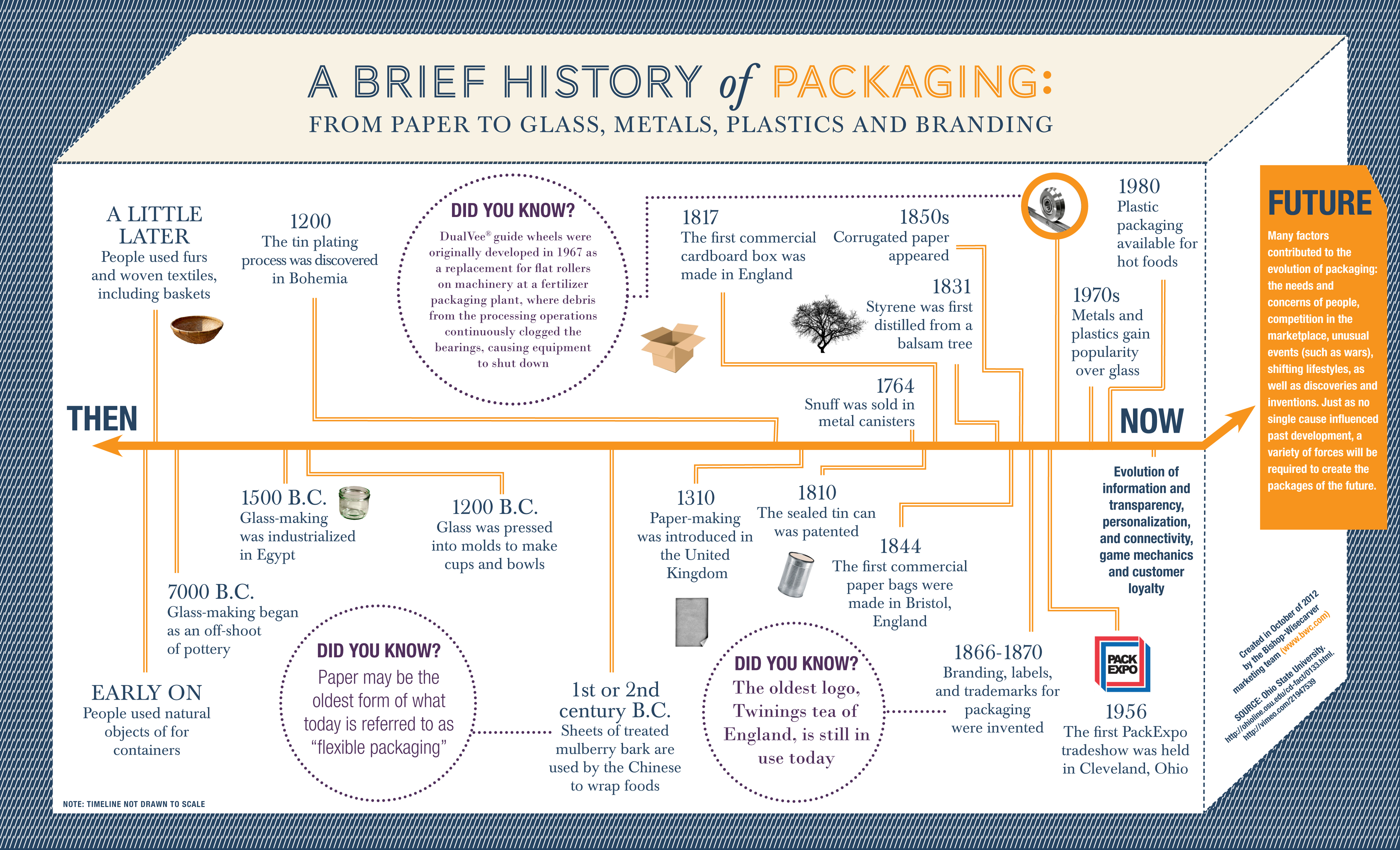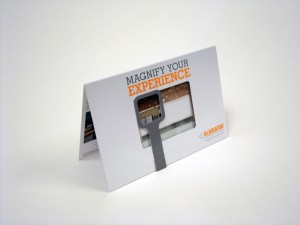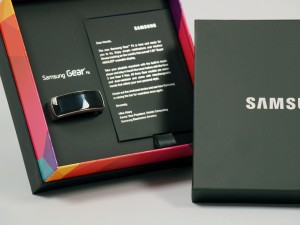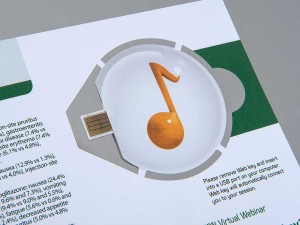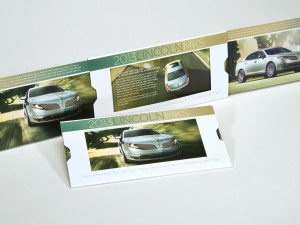Most of us have hobbies or activities that we love that drive us to get out of bed every morning (other than a steamy cup of coffee). For some of us, it’s reading, others, it’s skiing… exercise, playing an instrument, cars… the list goes on. For others, it’s travel, and for those of us that appreciate that finer things in life, a membership to a luxury hotel collection with travel perks is just the ticket.
Comprised of more than 400 hotels in 80 countries, The Leading Hotels is one of the largest luxury hotel collections in the world.
We weekly prepare and distribute nearly 2,000 member kits for new or renewing The Leading Hotels of the World members.
Woah.
The new and renewing members have an taste for elegance, which is why we work hard to make sure that each member receives white-glove service in the form of a hand-crafted welcome kit. Let us show you…
Structural Graphics prints in volume and stores in inventory all common components, seen above:
• Brochures
• Comp cards
• Envelopes
• Corrugate shipper
• Catalogs
The images speak for themselves. The details – each component, accompanied by variable data and images – are truly what make this kit so special.
“Structural Graphics has been a vital partner to the operations of our Loyalty Program in the wake of extreme membership growth. The onboarding process was thorough and we felt a strong commitment from the team to making the transition seamless and undisrupted from the get go. The team went above and beyond to satisfy our highly-personalized requirements with innovative ideas that saved us time and money in the end. One of which consisted of recreating an entire image library, assigning a unique image to each of our 400 hotels, which was formerly managed in-house. Because of their unique approach, we were able to start phasing operations earlier than scheduled. Over the last year we’ve experienced nothing but unwavering dedication to our partnership. The team I work with is highly-engaged and responsive; they even hosted me on a site visit to their fulfillment facility in Mexico and at their office in Essex, CT. Bringing on Structural Graphics as our fulfillment partner has been a fruitful business decision, I do not fear that they will not be equipped with the skills and knowledge to accommodate our changing business needs. I look forward to many rewarding years of partnership.”
– Julie Oleskiewicz, Senior Manager, Loyalty Marketing at The Leading Hotels of the World
We’re blushing! Hey Julie, we really like you, too.
